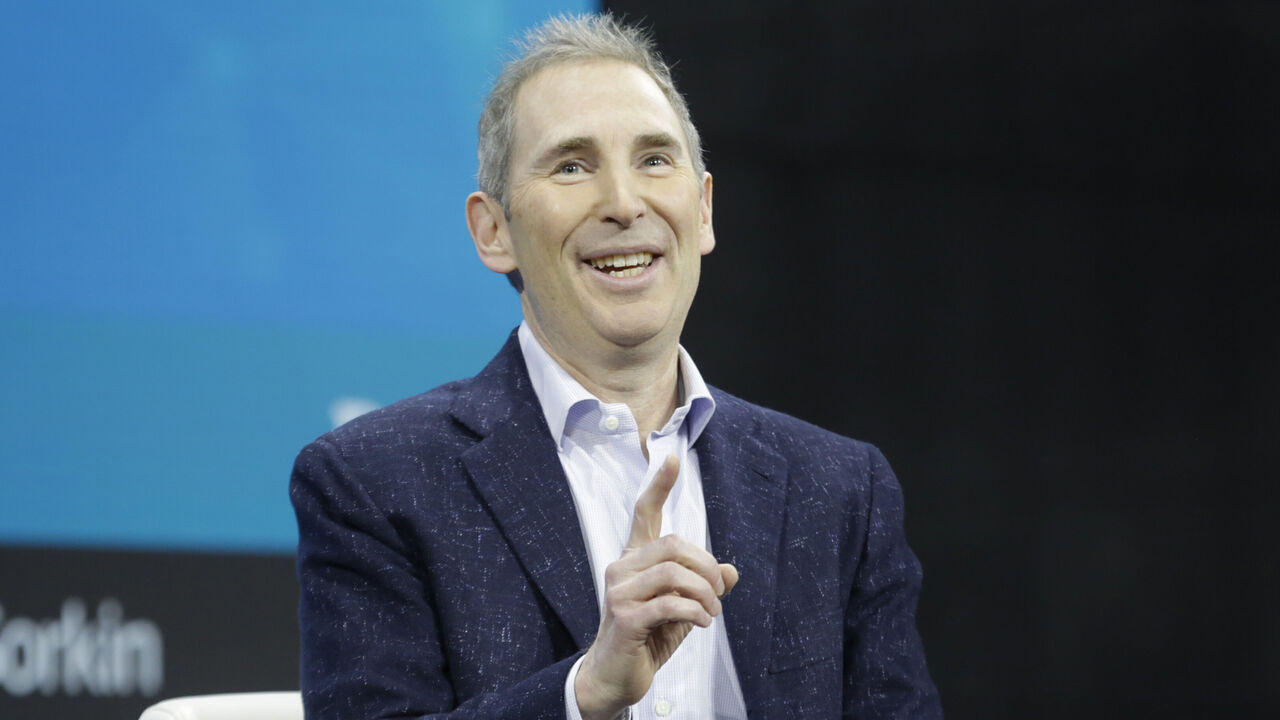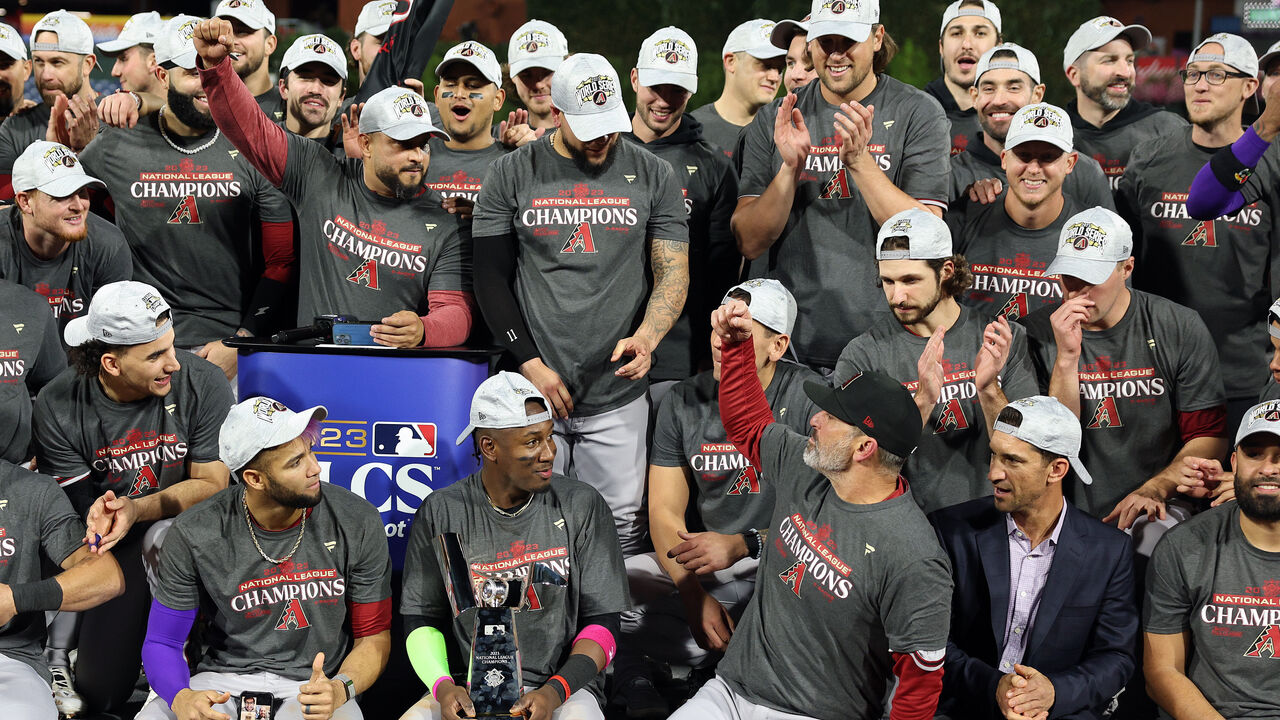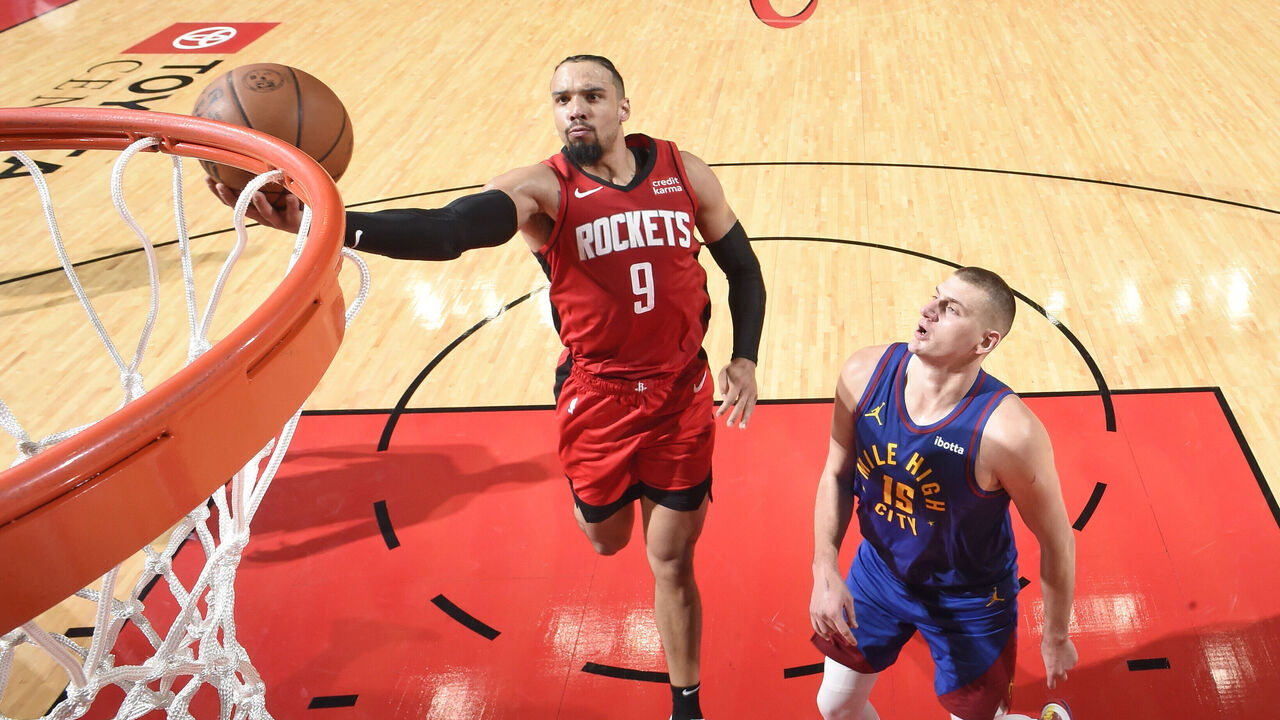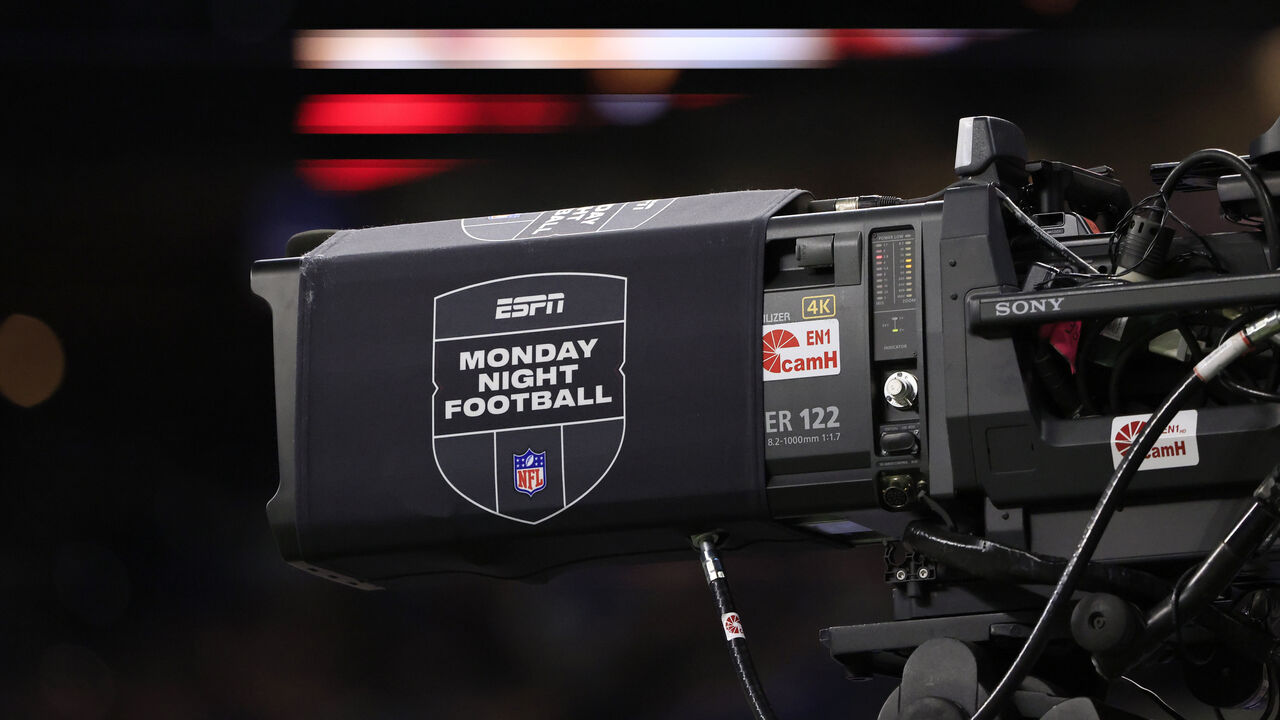This reckoning has been on the horizon for a while: 2024 is setting up to be the year the decades-old models of delivering sports broadcasts to people's homes undergoes a stark change.
Sinclair Broadcast Group announced in a Texas court in mid-November its intent to shut down its bankrupt subsidiary, Diamond Sports Group, which operates 17 regional Bally Sports networks across the U.S., at the end of 2024. "Diamond’s business is going to go away," Sinclair lawyer David Seligman told the court.
Diamond is the largest operator of regional sports networks (RSNs) in America, holding local broadcast rights for 39 teams in the NBA, MLB, and NHL. That's 42% of all live local sports TV inventory, not counting national rights. It filed for bankruptcy protection in March when it could no longer pay interest on its $9 billion in remaining debt from the purchase of 22 Fox Sports RSNs in 2019.
While Diamond is trying to stay afloat for another year, the math and consumers' cord-cutting habits are working against its survival.
At its peak in 2014, there were 100.5 million cable households in the U.S. At the end of the second quarter of this year, there were an estimated 61 million. This past summer, for the first time in the TV era, fewer than half of U.S. households watched TV via broadcast or paid cable.
In the third quarter, Comcast, the largest cable provider in the U.S., reported it shed 2.1 million of its cable subscribers - 12.5% - in the past year.
Earlier this November, the NBA struck a deal to have Diamond relinquish its outstanding local rights for 15 teams at the end of this season. In return, the NBA and those teams agreed to lower payments from Diamond for this season. The NHL's pursuing a similar deal. Diamond is attempting to keep 10 of its remaining 12 MLB clubs for 2024, and one industry source said relinquishing those rights after next season is on the table.
Diamond's struggles are an inflection point for live sports TV. It seems to be a matter of when and not if the entire RSN model falters. Earlier this year, Warner Bros. Discovery (WBD), the No. 2 RSN player, announced plans to sell its remaining RSNs by the end of this year.

It was an alarming acceleration to many equities analysts like Alex Morris, who owns TSOH Investment Research. Morris researches media companies like Disney and Comcast.
"I do wonder how much this is going to change, or has already been changing, what it means to be a sports fan," Morris told theScore. "How much are people going to seek out games when they can go watch a new TV show or movie on their own schedule, versus chasing down some local RSN, who wants you to pay $19.99 a month.
"The world has just kind of changed, particularly for sports with an excessive amount of (games) and where most regular-season games are of limited importance to the postseason."
By the end of 2024, there will likely be a wave of live TV sports rights hitting the market not seen since the New York Islanders pioneered the cable model in the early 1980s. Additionally, the NBA's national broadcast rights end after the 2024-25 season, and several networks and streamers are lining up to get a piece of that valuable property.
Will tech giants take over? Will direct-to-consumer models be viable? Can something like the cable bundle be recreated so teams in the same market are not competing against each other for subscriptions?
Those questions will play out across three leagues, and they have wide-ranging implications for how we watch, and for the bottom lines of those franchises.
"Follow the technology. Technology doesn't go backwards," said Greg Bouris, director of the undergraduate sports management program at Adelphi University, who previously worked for SportsChannel and for pro teams. "We watched the evolution of this industry grow from newspapers, to radio, to TV, to cable TV. And that was the one that changed everything, that placed the industry on a whole other trajectory: regional sports networks.
"It's going to be a different world."
The NBA gets the first crack at determining what that world looks like, with its national rights up for bids and half its teams' local rights being reclaimed from Diamond following the season.
It'll be the first time an array of rights for one league come to market since streaming overtook cable as the primary way consumers watch video.
"It gives the NBA more flexibility," Bouris said. "Having teams have their local rights expire at the same time their national rights (expire) gives them at least more decision-making power in how they want to dole out those rights."
On the national side, the NBA is reportedly looking for two to three partners and is interested in streaming platforms. The league's current rights holders, ESPN and TNT, have an exclusive negotiating window that opens in March, but tech giants like Apple and Amazon are also reportedly interested.

The tech giants' robust balance sheets give them an edge over traditional TV networks. The NBA could become the first major North American pro sports league to have a majority of its national rights streamed.
Perhaps what's more interesting - and troubling for leagues - is what happens to local rights, which face far more uncertainty over how they'll be distributed and who'll pay for them, Morris said.
Bill Koenig, the NBA’s top media executive, told Sports Business Journal the league will pursue a "hybrid" approach with teams being freed from Diamond.
The plan would entail selling traditional linear cable rights in markets impacted by the RSN implosion and then packaging all the streaming rights to sell to one company.
A similar approach was employed by MLB in 2023. The San Diego Padres and Arizona Diamondbacks were forced to find new cable homes in their respective markets in the middle of the season when Diamond relinquished the rights. Their games were also streamed direct-to-consumer. Fans had the option to buy in-market Padres and D-Backs games for $20 a month on MLB.TV.

MLB guaranteed the clubs 80% of revenues they were set to receive via TV in case there was a shortfall, and commissioner Rob Manfred said recently no such financial support was needed.
However, MLB is no longer offering a backstop guarantee of revenues, and Manfred said the league is prepared and able to take over broadcasts of up to 16 clubs in 2024.
A hybrid approach can work in the short term because it allows ratings to remain stable with the mix of viewers in linear TV and streaming.
The good news for baseball is there were 402 million combined viewers (96,000 per broadcast) tuning into MLB games on cable in 2022, according to viewership data obtained by theScore - more than double the total local viewership of the NBA on cable.
The not-so-great news: fewer people are paying for cable TV packages, which means there are fewer subscribers paying for bundles that may contain channels like an RSN they don't watch. That was the magic of cable bundles for a long time. There was no itemized list in a consumer's bill showing they paid, say, $7 for Bally Sports.
Those subsidizing viewers are departing and those who remain are aging and taking on a greater share of the bill, all while programming costs and rights fees have continued to increase.
Morris has tracked Comcast programming costs for a decade. In that time, the cost of content increased from $30 per subscriber in 2014 to $75 this year.
"If we priced paid TV at $75, Comcast is just covering their programming costs, let alone everything that is involved for running the MVPD (multichannel video programming distributor) business," Morris said. "It just speaks to that continuing trend, and it becomes a cycle of: are you willing to pay $60 to watch your favorite sports team? How about $75 or $80? How about $100? The numbers just keep moving the wrong direction, particularly when compared to what you can get with some combination of DTC (direct-to-consumer) services at a much lower all-in price." (Like ESPN+, Max with BR Sports, Peacock, and Paramount+.)
The hybrid model can sustain such a cycle for only so long.
The implosion of RSN models leads to one very important question regarding local broadcasts.
"You have a question of how many fans are die-hard versus how many are not," Morris said. "If you force people to actively choose to seek this stuff out, spend a lot of money, you're going to really screen for the die-hards."

The Rockets and Astros in Houston teamed up to buy AT&T SportsNet Southwest from WBD and rebranded it Space City Home Network. The clubs now have to figure out how to replace the combined $120 million in rights fees they received from WBD.
Consider the Padres' situation. After MLB took over the club's broadcasts on May 30 when Diamond relinquished rights, 18,000 in-market subscriptions were purchased to stream Padres games via MLB.TV.
While that number would be higher if games weren't also being offered on a specially created local cable/satellite channel, Morris and Bouris both said we're learning how difficult it is to convert cable subscribers into buyers of DTC platforms specifically for sports.
Diamond testified in bankruptcy court in May that it had only 200,000 total streaming subscribers across all its in-market teams.
But if linear cable disappeared tomorrow, it's difficult to believe streaming Padres games would come close to matching the revenue generated from the 20-year, $1.2-billion contract the Padres had with Diamond.
"I don't see anybody, really, coming out and telling me how to replace it," Bouris said of RSN cable revenues.
Manfred conceded to reporters during the postseason that streaming "doesn’t have today the same robust economics that the cable bundle provided as an exclusive source of distribution. But my own view of the world is … the (cable) distribution may be smaller going forward, and we’re gonna put with it that digital option that gives people more flexibility, more reach, and is better for fans overall."
MLB teams are responding to that uncertainty this offseason with some of their roster decisions. Cleveland Guardians president of baseball operations Chris Antonetti said part of the reason the club designated Cal Quantrill for assignment (and then traded him to Colorado) is that it's leery of paying him an estimated $6 million in arbitration because of concerns about TV revenues.

The Minnesota Twins, another Diamond team whose local TV future is up in the air, stated they'll operate with a smaller payroll next year despite reaching the playoffs this year.
There are some players who believe there's too much doom and gloom in the media about TV revenues, and that MLB clubs are using Diamond's implosion as cover to reduce spending. While it's difficult to know if teams are overstating the issue for 2024, the uncertainty about what the future looks like is real.
Baseball is particularly vulnerable in the future of sports TV, because its national rights don't command nearly the same dollars as the NFL or NBA.
The NFL's national rights went for 11 years and $110 billion in 2021. Amazon is paying $1 billion annually to stream Thursday Night Football, suggesting there's plenty of streaming money for the league should it need to shift more games there.
The NBA is seeking $75 billion from its next multi-year national rights deals, a significant jump from the nine-year, $24-billion deals that expire at the end of next season.
MLB's current deals cover seven years and combine for $12.5 billion.
One rival league executive told me MLB faces two issues: its product has become more regional, and it lacks star power that bidders for national rights desire.
MLB is much more driven by volume of TV inventory, and Morris said that's challenging in this new era.

"The leagues with a massive volume of games are losing, in my opinion, to other forms of entertainment, time consumption," Morris said. "So how do you price and package that to drive a lot of viewership and interest?
"It makes me wonder if you are better off selling a higher-priced - say, around $100 per season - service to super fans, or, if you're better off with a model like what ESPN+ has with the NHL for its out-of-market games. All 26 million ESPN+ customers have access to the out-of-market package without paying an incremental fee, which likely helps with viewership.
"Overall, it's a difficult question to answer, particularly when trying to balance the dual objectives of viewership fandom and financial considerations. The competition for eyeballs is becoming more intense over time."
Ideally there will be more concentration on platforms, too. Morris notes there was a five-day stretch last season where five New York Yankees games were broadcast on four different platforms.
Ideally, Bouris said, a third party would step in and cut MLB guaranteed checks for all those local rights and end regional blackouts.
Morris and Bouris both think one plausible long-term home at the moment for much of these live sports rights is Google's YouTubeTV, which, like Hulu, is a streaming version of cable that carries many of the same channels. YouTube also recently ventured into live sports in a big way by purchasing the NFL Sunday Ticket out-of-market package. And unlike Netflix, YouTube generates most of its revenue through advertising instead of subscriptions, perhaps better positioning it for live sports.
It helps that Google's parent company Alphabet holds the most cash ($120 billion) and least debt ($13 billion) of any company in the live sports game.

Morris said delivering better advertising monetization will be key for the new model. It can be a long-term tailwind for all live TV sports. Not only are more viewers transitioning to streaming over time but ad dollars are following them. Ad dollars spent on so-called connected TV have risen from $6 billion in 2019 to $20 billion this year to a projected $41 billion by 2027.
"That competition to win subscribers has ratcheted up content cost," Trade Desk CEO Jeff Green said in the company's recent third-quarter conference call. His company helps connect ad buyers with ad inventory. "Higher content costs mean raising prices or finding some way to raise revenue per user if media companies were going to continue to feed their content engines with a similar rate as before. Every premium video content company from Disney to Paramount to NBCU and Sky to Netflix have changed pricing and embraced advertising.
"More and more live sports inventory, perhaps the crown jewel for most streaming providers, is opening up for programmatic (ad) buying on our platform."
The ad tailwind could be massive for live sports and streamers in the coming years.
While there figures to be short-term economic pain for some markets and leagues, there is long-term opportunity. After all, pro sports leagues hold monopolies on fan interest and the goodwill and nostalgia built up among supporters.
What that future looks like will play out in the coming months and years, but there's no doubt we're accelerating to a new world of live TV sports.
Travis Sawchik is theScore's senior baseball writer.
Copyright © 2023 Score Media Ventures Inc. All rights reserved. Certain content reproduced under license.